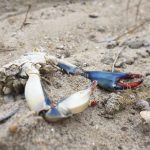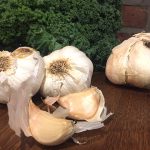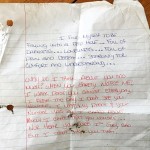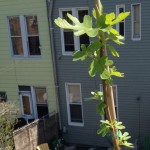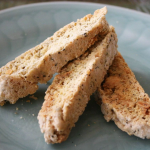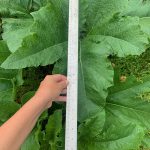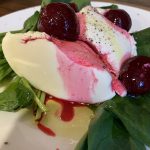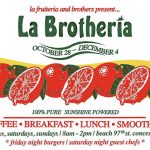Last year I battled a squirrel who decided to feast like a gavone on my amazing pumpkin and gourd display. I documented his “vandalism” on Instagram. One follower recommended coating the pumpkins and gourds with clear polyacrylic. It worked for about two weeks and then the gnawing continued. He showed no mercy! As the weeks went on, my anger subsided and I grew a fondness for the little guy (or shall I say, chubby guy.) I looked forward to seeing him on the porch while sipping my morning coffee.
This year, he’s back! Squirrel’s first attack was on Halloween. I was working and wouldn’t be home to give out candy to the kids. Not wanting to disappoint, I left Snickers, Kit Kats, and Milky Ways on the porch in a big red bowl. The thought crossed my mind, “Maybe one kid would take it all!”, but I wanted to put the treats out regardless. What I didn’t expect was for one squirrel to take it all!
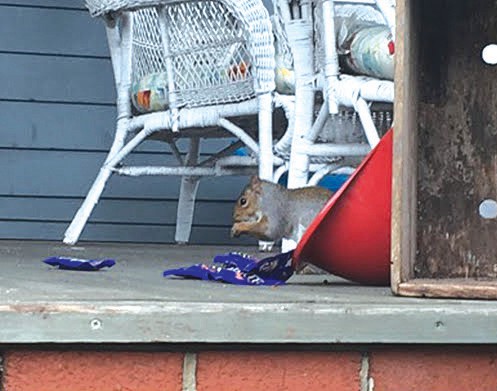
Oct. 31- Eats Halloween Chocolate.
My husband came home later in the day to find Squirrel feasting, caught chocolate-handed! More than half the bowl was gone as the culprit ran away carrying a Kit Kat in his teeth! Over that weekend I found Butterfingers hidden on the side of the house and in the front garden. I didn’t have the heart to throw them away. I left them for Squirrel to find and enjoy during the colder months.
His piggery didn’t end with Halloween. Next up on the menu was my decorative corn. I bought beautiful corn stalks from Lisena Garden Center (12-5 Cross Bay Blvd, Broad Channel), with bright yellow corn, 5-6 on each stem! The pop of color looked so nice on my porch with the rest of my seasonal display.
One day after securing the corn stalks to the front columns near my entry, Squirrel started chopping away! Bits of corn leftovers lay all along the front steps. Birds appeared and joined in the eating frenzy! I could almost hear David Attenborough narrating the natural ecological experience! While my corn was quickly disappearing, the cobs itself were red, and that still looked pretty cool.
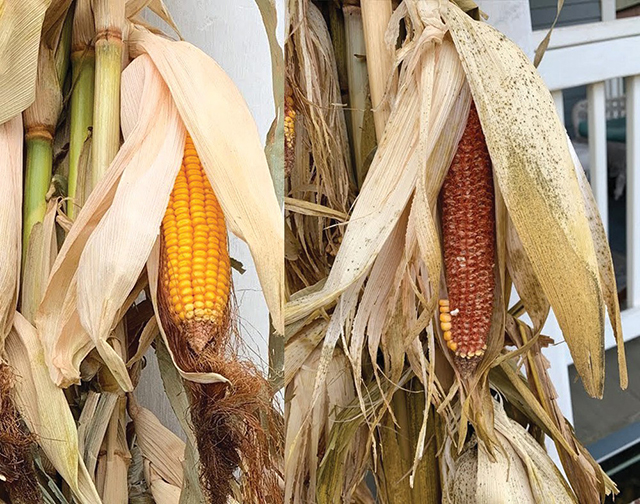 Nov. 2 – Corn decimation, before and after.
Nov. 2 – Corn decimation, before and after.
Squirrel is fearless! He continued eating the corn hanging on with his feet while I approached him, only abandoning his bounty when I got two feet away. He finished both stalks in two weeks.
But he didn’t stop at a mere two courses. He was ready for a third – the pumpkins. They’d been out as long as the corn, but it seems squirrel food preferences run in the following order: chocolate, corn, pumpkin. I have a thought to buy nuts and see if he’ll eat those over the pumpkins. After all, isn’t that Squirrel’s food of choice?
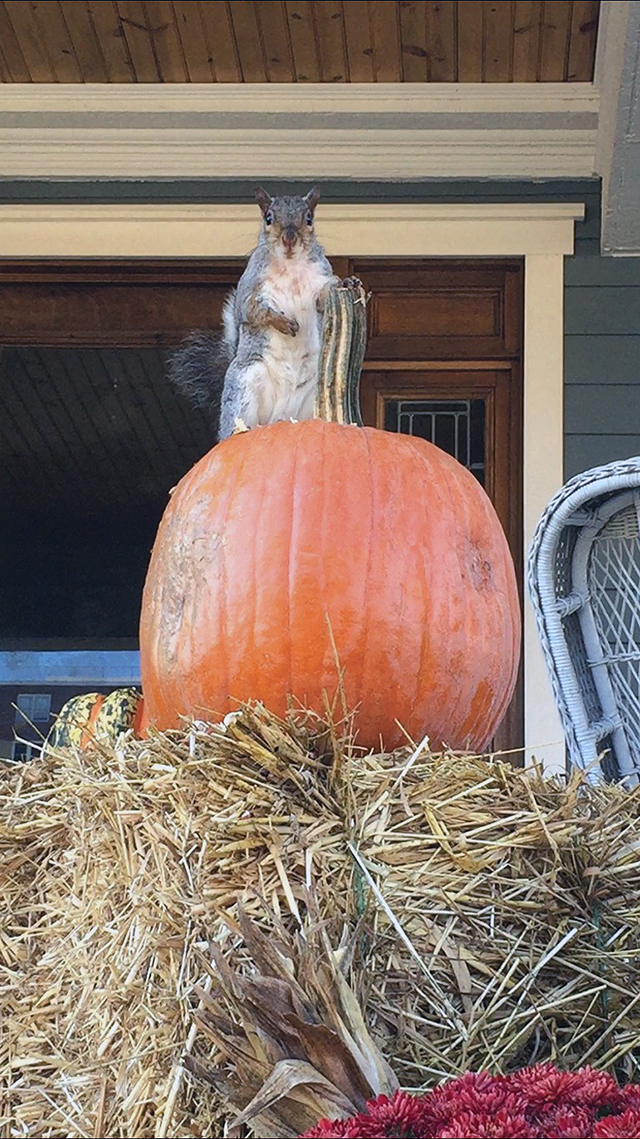 Nov. 12 – Claiming ownership of the pumpkin
Nov. 12 – Claiming ownership of the pumpkin
My squirrel and the ones in your backyard are Eastern Gray Squirrels. That also includes the darker grey and the rarer black-colored squirrels. I hate that these cuties get a bad rap. They are true New Yorkers, mischievous and resilient. These animals have an excellent sense of smell which is why they can find their buried Butterfingers throughout the winter, even under the snow. In NYC, Eastern Grays can live up to 5 years. In rural areas, up to ten years and in captivity, squirrels can live for 20 years!
Let’s embrace our squirrels rather than disregard them as pests! They are beautiful to look at and entertaining to observe!
Basil and tomatoes are a staple in home gardens, especially those kept by Italians. But garlic, a base for so many meals across so many cultures is grown significantly less. Why? I’m assuming it’s because garlic is a cool-weather crop and you can’t buy a starter plant at the garden center. Moreover, many people assume the garden season ends when September hits. NYC is garden Zone 7 which means we can grow food and plant for the spring until the first frost. These days, that feels like mid-December. Kale, collards, spinach, lettuce, and alike can be planted from early April and as late as August for a continued supply of greens through November/December.
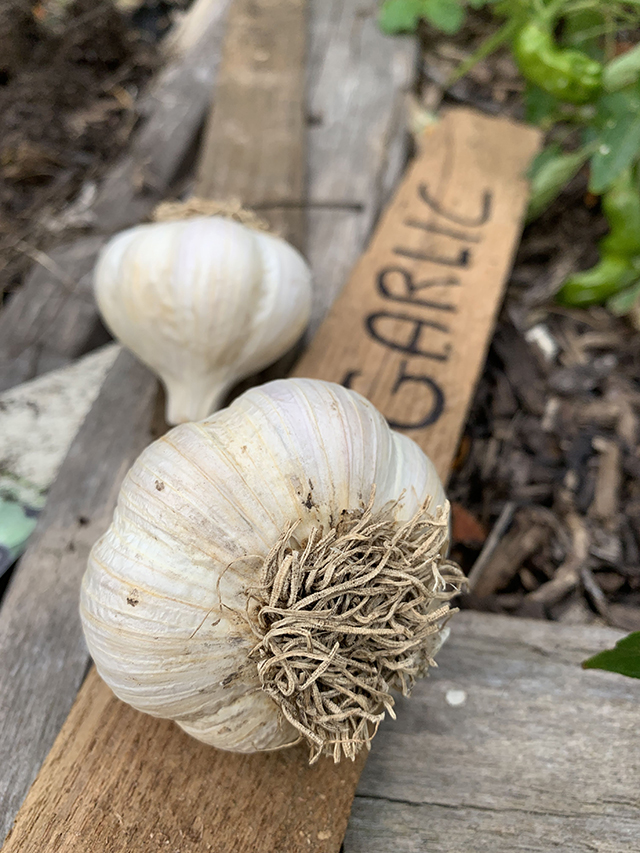 Make sure to label where you planted the garlic, so you’ll remember in the spring.
Make sure to label where you planted the garlic, so you’ll remember in the spring.
This will be my first year planting garlic! It’s a little late in the season, so if you’re interested in doing this, get to it over the weekend. Ideally, in New York, you should plant garlic in mid-October. My friend Diane Cardwell, expert garlic-planter said it should be fine if planted now. Diane graciously supplied me with two of her homegrown bulbs.
Garlic grows from individual cloves broken off from the head. You can use garlic from the supermarket but if you have the opportunity to buy from a farmstand, at a garlic festival, or from a site like burpee.com, that would work best. There are so many varieties! While Diane isn’t sure of the type of garlic she passed along to me, (the identification markers faded last year), we do know it’s the porcelain hardneck type, producing 4-7 large cloves. And the flavor is sharp and strong!
How to plant garlic:
Pick a sunny location with rich, well-drained soil. (Garlic can also be planted in a container. It requires little space).
- Gently break apart the garlic bulb so you have the plantable cloves. Leave a thin layer of skin on.
- Dig a small trench 4 inches deep. Place the root side down in the ground, pointy side faces up. Space 4 inches apart, each row – 2 inches apart. Cover with soil.
- Add a top layer of straw or mulch for protection from the elements.
- Clearly mark the garlic rows so you don’t accidentally dig them up or plant over them in April.
Note: Garlic, year-to-year should be rotated in the garden bed.
In the early spring, you’ll see sprouts! And in July, the garlic will be ready to harvest. When the scape and leaves start to die off, it’s time to carefully dig them out. Next summer I’ll update on this and write about my experience harvesting garlic for the first time. I like the idea of forgetting about something and then being happily reminded in the spring that you’re planting has awoken from the winter!
For more plant talk follow Paula on Instagram @theglorifiedtomato
Previously published in The Wave
by Paula D.
on November 4, 2019 10:54 am in Holiday
Season two of Mindhunter* was released in August on Netflix and I binge-watched it. The show is centered around the new-at-the-time Behavioral Science Unit of the FBI, formed in the late 1970s. The main characters interview imprisoned serial killers to understand what makes them tick, in the hopes of solving contemporary cases. The show is so good. After I disposed of that series, Netflix recommended Criminal Minds – 10 seasons of brutal serial murder cases. It’s similar to Mindhunter, as it’s about the same Behavioral Science FBI Unit, but based in the present day. The show is formulaic like Law and Order, which I love.
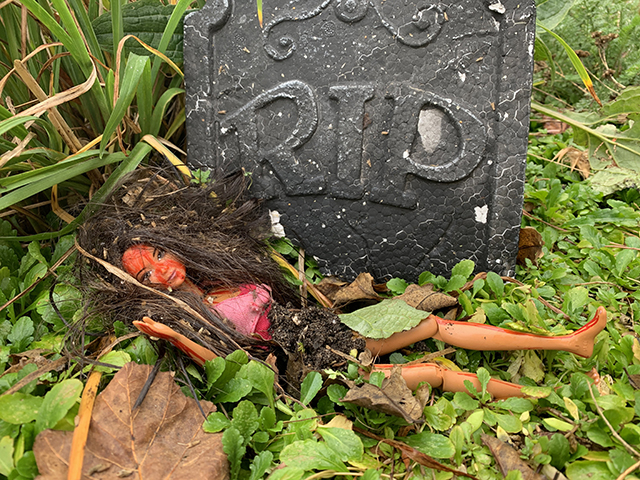
I will say though, all this murder is getting to me. I’ve been paranoid, checking the doors several times before bed and making sure the outdoor lights are on. One night I heard a “bang” coming from the basement. My heart started to race. I grabbed a can of tomato sauce that was on the counter. I thought I could throw it at the perpetrator’s head. It turned out (thank God) to just be my cat. He knocked over a vase. About a week ago I was leaving The Gateway Shopping Center. It was late. I got into the car and then had the thought, “Say if someone is hiding in the back seat?” I unbuckled my seatbelt and checked. Another paranoid thought popped in my head when I was attempting a calm, “self-care” evening. I was taking a bath. The candles were lit and I had the eucalyptus aromatherapy diffuser going. All of a sudden my mind drifted and I imagined the unsub charging into the bathroom and electrocuting me, by throwing a blow dryer into the bathwater.
I need to take a breather from these shows.
My husband thinks I have an unhealthy obsession with death. It must run in my family. My Mother and I always “fantasize” about our funerals. Who will come? How many floral displays will be given? What items will be put in our coffins? We talk about the music at the funeral. My mom wants When The Saints Go Marching In to be her “Carry-out” song, performed by a brass band. We both want a big party with lots of food, instead of the traditional sober luncheon. We even thought to freeze my mother’s delicious meatballs so they can be served to the family at her funeral party. It just requires some planning. You shouldn’t freeze food for more than six months, so we would need a heads up before she dies. My mother and I always joke, your funeral is “the FINALl party.” It’s gotta be one to remember.
All of this death talk is reminding me that I need to write a will. And get life insurance. My friend Cecilla and I have actually talked about this at length. We both don’t have kids and we own property. Who would be the next of kin? Who will take custody of my four cats if Matt and I die at the hands of a psychopathic serial killer? I wouldn’t want the house to go up for some city auction, after all the hard work we put into rebuilding it. I really need to get these matters in order.
All this may sound a little morbid but these are my true thoughts (eek). I hope I didn’t scare you off…
*The Netflix show is based on the true-crime book Mindhunter: Inside the FBI’s Elite Serial Crime Unit written by John E. Douglas and Mark Olshaker. I’ve read the book, If you’re into murder mystery, this is a must-read.
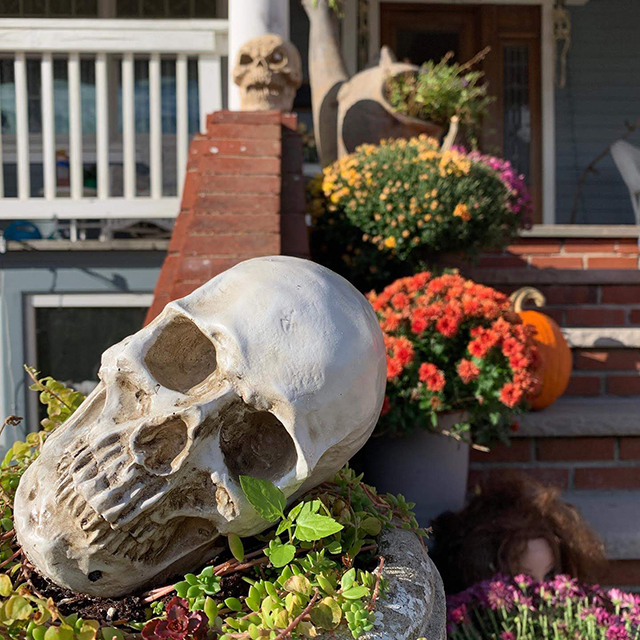
As I mentioned last week, I want to elaborate on a few more edible plants I discovered at Fort Tilden while on a walking tour with naturalist, and Northern Eastern forager expert Wildman Steve Brill.*
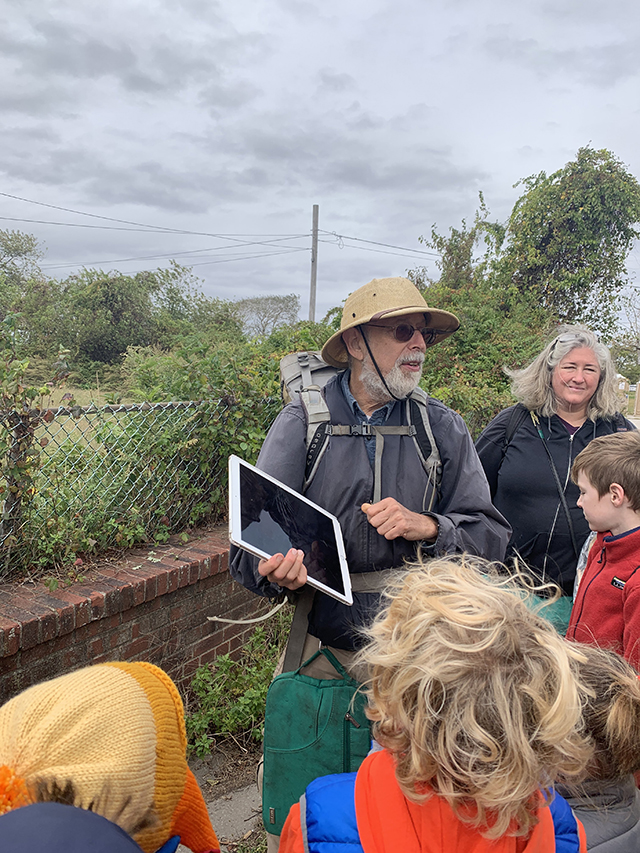
Barbarea (Wintercress or Yellow Rocket). We stumbled upon a low growing plant in a rosette formation. Brill directed us to tear a leaf and he asked what flavor it reminds us of. I thought it tasted spicy. Someone blurted out, mustard. “Correct!” Brill said with excitement, “This native edible is an Herbaceous plant (herb or spice). It tastes bitter, it’s part of the mustard family.” The leaves are dark green and shiny. In the spring/summer it has a tall yellow flower, the seeds are edible too. Wintercress can be used to make a garlic, mustard dressing, salsa or can be used in soups. It’s best cooked, otherwise too bitter. Wintercress is related to Watercress which you often see in the local supermarket.
Rumex crispus (Curly Dock). This is one of my favorites. It tastes like lemon and thus can be used in so many ways. It helps with liver function – boil it and drink in tea form. I couldn’t believe this flavorful herb was right under my feet and I didn’t know it. The perennial also grows in a rose-like formation and shoots up with a small yellow flower during the summer, turning auburn in the fall. But it usually never gets to that stage, since it’s often mowed down. An easy way to identify this plant is by the curly leaf edges. With each plant discovered, Steve showed us illustrations he drew of the edible plant at different growth stages.
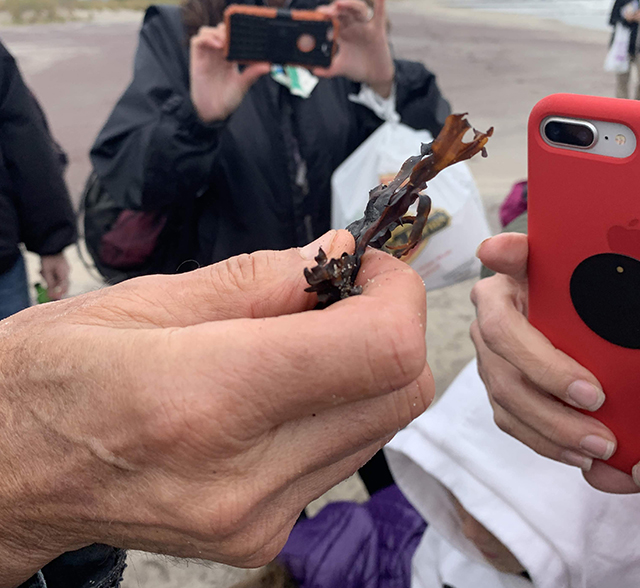
Edible Rockweed can be found right here on the peninsula!
Fucus vesiculosus (Rockweed) – probably the most exciting edible of the day. We ate seaweed! The tour finished at the ocean where we tasted Rockweed and Sea Lettuce. Both you’ve seen while swimming around in the water this summer. Sea lettuce is “That seaweed you always see.” It’s the bright and dark green, semi-translucent stuff everywhere. Rockweed, which tastes better, is harder to come by but still found around the peninsula during low tide. It prefers to grow along rocky coastlines like the north shore of Long Island. It taste like salty fish “but in a good way”! It can be dark green or purple/brown (when less hydrated). It has “bladder pods” along its thin fronds. The Wildman noted, It’s excellent to use for a mock-fish dinner!” Other culinary uses include – soups, ramen, and stir-fry. I also read this marine plant is used to smoke meat. Noteworthy, Rockweed is the original source of iodine, discovered in 1811. It was used to treat thyroid related deficiencies.
I was inspired after the tour, so I bought one of Steve’s books, “The Wildman Vegan Cookbook” Don’t be thrown off by “vegan”, anyone can try these recipes– why not, right? The quote on the opening page has stuck with me, “This book is dedicated to all the nonviolent environmental activists worldwide who have risked physical injury, financial loss, and their liberty to keep our planet green, vibrant and alive.”
If this column has interested you, check out Wildman Steve’s calendar of events here. There’s still time to forage before winter is upon us!
*If you need to backtrack, find my first column about The Wildman here.
 Nov. 2 – Corn decimation, before and after.
Nov. 2 – Corn decimation, before and after. Nov. 12 – Claiming ownership of the pumpkin
Nov. 12 – Claiming ownership of the pumpkin











